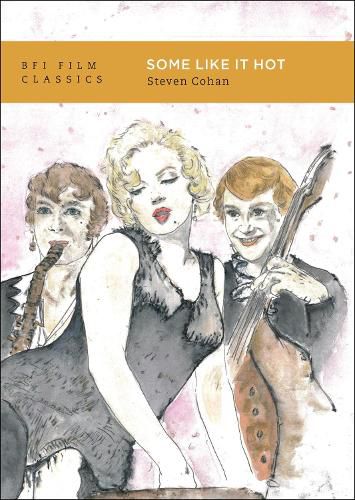Readings Newsletter
Become a Readings Member to make your shopping experience even easier.
Sign in or sign up for free!
You’re not far away from qualifying for FREE standard shipping within Australia
You’ve qualified for FREE standard shipping within Australia
The cart is loading…






Billy Wilder's classic screwball comedy Some Like it Hot (1959), starring Jack Lemmon, Tony Curtis and Marilyn Monroe, tells the story of two struggling Jazz musicians who accidentally witness a mob massacre in Chicago who then, disguised as women, join a female band to escape the gangsters' pursuit. Despite the film's popular reception, with Academy Award nominations for Wilder and star Jack Lemmon, the film gained notoriety for its crossdressing plot and gender-bending comedy.
Steven Cohan's study of the film disentangles its production history and subsequent notoriety from the film itself, reconsidering the ways in which it playfully challenged generic and gender conventions of the 1950s. He provides an in depth analysis of the film's near perfect comedic structure, Wilder's aesthetic choices and self-reflexive star performances by Curtis, Lemmon and Monroe.
He goes on to consider the film's queerness, as well as its promotion and reception in 1959. Contextualizing the film within its contemporary moment, he argues its textual richness, one that allows it to be viewed differently across generations, securing its lasting influence in popular culture.
$9.00 standard shipping within Australia
FREE standard shipping within Australia for orders over $100.00
Express & International shipping calculated at checkout
Billy Wilder's classic screwball comedy Some Like it Hot (1959), starring Jack Lemmon, Tony Curtis and Marilyn Monroe, tells the story of two struggling Jazz musicians who accidentally witness a mob massacre in Chicago who then, disguised as women, join a female band to escape the gangsters' pursuit. Despite the film's popular reception, with Academy Award nominations for Wilder and star Jack Lemmon, the film gained notoriety for its crossdressing plot and gender-bending comedy.
Steven Cohan's study of the film disentangles its production history and subsequent notoriety from the film itself, reconsidering the ways in which it playfully challenged generic and gender conventions of the 1950s. He provides an in depth analysis of the film's near perfect comedic structure, Wilder's aesthetic choices and self-reflexive star performances by Curtis, Lemmon and Monroe.
He goes on to consider the film's queerness, as well as its promotion and reception in 1959. Contextualizing the film within its contemporary moment, he argues its textual richness, one that allows it to be viewed differently across generations, securing its lasting influence in popular culture.